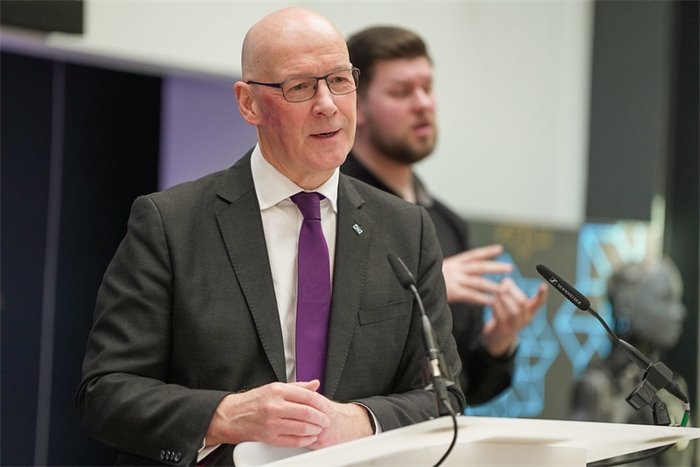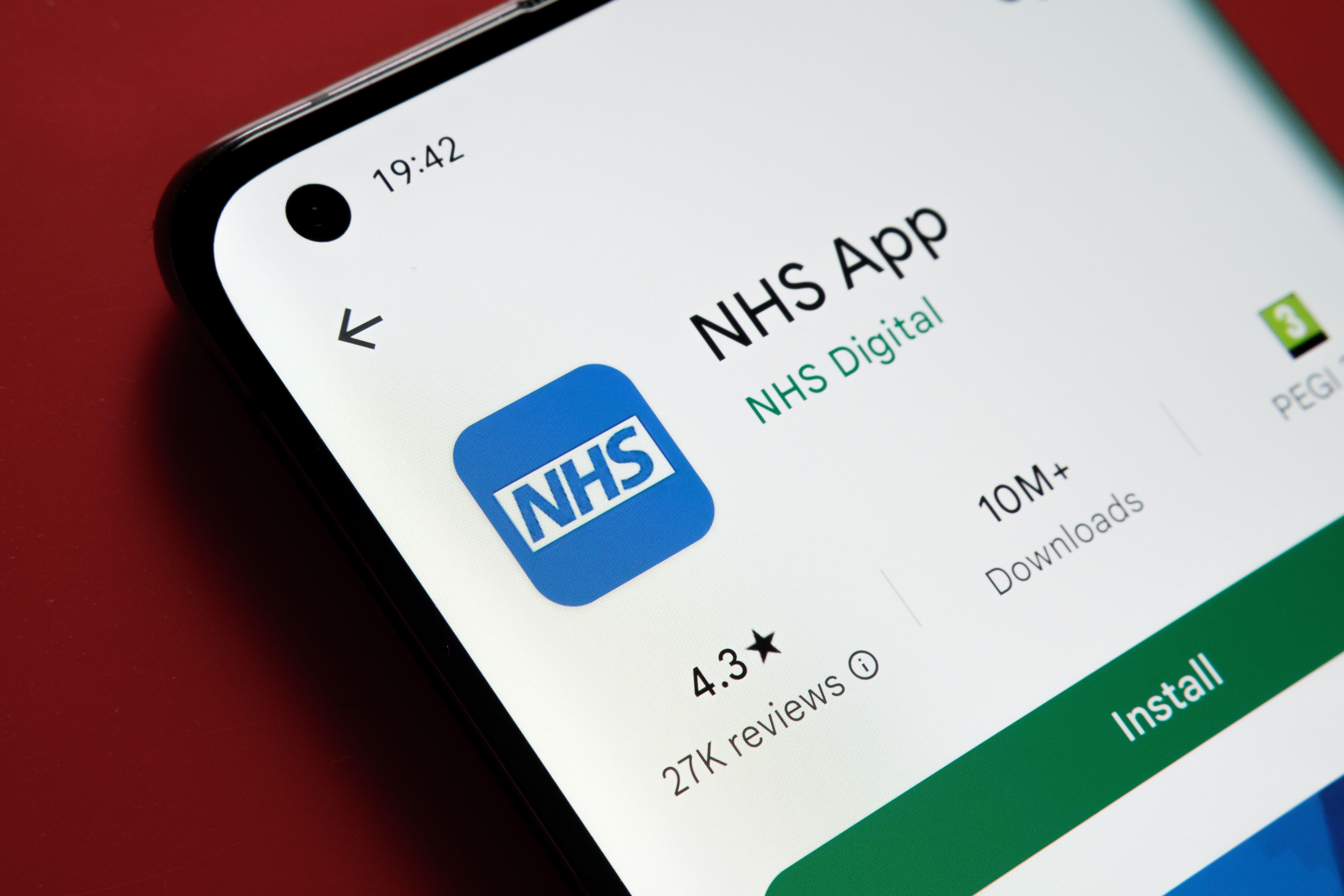Playing catch-up: Will the rollout of the long overdue NHS app help take pressure off Scotland’s GPs?
At 17, Chris Black was home alone during his school lunch break when he got a brief call to say his mother had passed away. “The doctor said, ‘Your mum died this morning. I’ll call back later’”, he says.
He pinpoints that moment as what inspired him to go into medicine. “I thought I could probably communicate with people slightly better than that”, he says.
But decades later the patient-practitioner relationship has reached breaking point. Significant delays in appointments and referrals have become commonplace, with points of access varying across every GP surgery. Yet the technology to address these problems has been available for years – both within the UK and internationally – leaving many to wonder why is hasn’t been introduced sooner.
In January, First Minister John Swinney announced the much-anticipated NHS Scotland app – also known as the Digital Front Door – would begin roll out by the end of the 2025, starting in Lanarkshire. First announced in 2021 by then-health secretary Humza Yousaf in the Care in the Digital Age strategy, the app was meant to “support people to access information and services directly.”
While Swinney recognised the platform was a “much-needed addition to improve patients’ interaction with the NHS”, the project will launch two years behind schedule and details on its features are still unknown. However, a Scottish Government spokesperson told Holyrood initially the plan will allow patients to “securely access some of their hospital appointments online, receive communications, find local services and access and update their personal information”, with plans for a national roll out to be set out this summer.

John Swinney delivering his speech at The National Robotarium | Image credit: The Scottish Government
Meanwhile, England and Wales have had their platforms up and running for six and two years respectively. Since 2019, patients in England have been able to book appointments and order repeat prescriptions through the NHS England app, which now has around 30 million users. Soon they’ll also be able to access their full medical records via the platform – a feature announced by UK health secretary Wes Streeting last October. Scotland’s progress has been patchy, fragmented and, many would argue, too slow.
Black, who is now the deputy chair of the Scottish General Practitioners Committee, admits: “Certainly from our perspective, you look on with frustration knowing that there’s technology that could potentially make your day-to-day job easier and potentially safer.”
But the app’s value goes far beyond smoother communication or more convenient care. It could be a powerful tool to tackle some of Scotland’s most pressing challenges, including GP and hospital no-shows. In NHS Greater Glasgow and Clyde (NHSGGC) alone each missed in-patient appointment is estimated to cost more than £230. Facing hours on hold to cancel or re-arrange their date, patients often opt for simply not turning up. In comparison, the English app saved 400,000 hours of GP time in 2024, according to NHS England.
Professor Claudia Pagliari, director of global eHealth at the University of Edinburgh, says: “I think sometimes we get too ambitious, and we need to focus on what is useful, necessary, available, cheap, or at least accessible, and how we can scale that in a way that means people will use it.”
She adds: “We need to be reaching the public in a way that recognises that each group is a bit different in the way it wants to interact with their GP [and] the way it consumes information. So, we need to much be much more agile, adaptive and personalised.”
 Image credit: Alamy
Image credit: Alamy
However, it remains true that Scotland has been at a disadvantage compared to its English counterpart. The NHS England app benefits from an IT infrastructure, known as the digital spine, which Scotland lacks. First launched in 2005, and updated once since, this system acts as the backbone of healthcare services in England, enabling quick access and exchange of patient information among healthcare professionals.
You look on with frustration knowing that there’s technology that could potentially make your day-to-day job easier and potentially safer
Chris Williams, chair of the RCGP (Royal College of General Practitioners) Scotland, however, argues it was “terribly” expensive and failed to deliver on its aims, suggesting it would not have made sense for Scotland to replicate it.
“It was in some ways an example of what not to do with an IT project”, he explains. Indeed, in its early years the spine raised concerns over data privacy and was described as having “little clinical functionality”.
Williams also cautions against buying into the hype surrounding the English app, claiming the process has been far from pain-free. Over the years the platform has dealt with numerous user complaints, particularly regarding log-in and verification systems.
“They [NHS England] leveraged infrastructure that they had available, and they certainly didn’t get it right the first time”, he says. “I can understand why NHS Scotland has taken its time to build something that is secure and reliable... It’s not as easy as flicking a switch”.
At a global level, there have also been horror stories of deploying technology without the appropriate infrastructure and quality controls in place. In 2021, the Brazilian government had to take its Covid trace app offline two weeks after launching it after it over-diagnosed and encouraged patients to self-medicate with unproven drugs.
Pagliari says: “Sometimes it is a bit of a no-brainer and it’s not that high-risk and you know it’s already proof of concept elsewhere and probably you can simply replicate. Everyone gets fed up with endless pilots that never lead to wholescale implementation.
“But if anything is life-critical or could lead to a patient’s suicide, say if [the patient] reads the wrong information about themselves or a man snooped on his wife’s record and realised she’d been complaining about being domestically abused and kills her… these are things you have to watch out for – privacy [and] safety concerns primarily.”
Similarly, the rise of cybercrime has also heightened concerns of having a centralised system of patient information, especially following the cyber-attack on NHS Dumfries and Galloway which saw a significant amount of patient data being leaked to the dark web.
Unfortunately, I think there is a political to and fro about the NHS and the delivery of healthcare.
However, Pagliari, who chaired the evaluation group on the NHS England app, insists we could’ve “hopped on board” with it. While she acknowledges there are “different back-end systems” between the two countries, she argues there are “also elements of national pride” behind the refusal to adopt it.
“We spend too long trying to make things just Scottish and I think that’s a problem. And it’s confusing, particularly for people that live on the borders or that move around. It also means that we can’t as easily build on the momentum that has been built in England amongst GPs and have a kind of imitation effect in Scotland.”
She continues: “I think we need to get over ourselves and just basically borrow, not steal but reuse and adapt and capitalise on existing knowledge. You don’t have to reevaluate in the same way, or at least not to the same extent because a lot of that background work has been done.”
It’s not just the app where the Scottish Government is lagging behind on tech-powered solutions for the NHS workforce. In its 2021 manifesto, the SNP pledged to introduce electronic prescriptions that would be sent directly to pharmacists in a bid to streamline access to medication. This would replace the current paper-based system, which still requires doctors to manually sign prescriptions. But three health secretaries later “it’s not looking like it’s going to be delivered for at least another two years”, Black admits to Holyrood. Meanwhile, e-prescriptions have been available in England since 2019, and were launched in Wales in 2023.
Black adds: “It [paper prescriptions] makes the day job more difficult. Being a GP, if you’re sitting signing 100-odd bits of paper on a day, it doesn’t just happen in a flash of an instant. You’re double-checking things, you’re actively signing things and when you’re doing that it’s at the expense of other things related to patient care… It just it just seems wrong.”
Pagliari, who was also a Scottish Government adviser on digital ethics between 2020-2022, says: “There is resistance to change. There is too much stress, not enough people, no extra cash to actually help you to take the time out to learn how to use these systems… or expertise to redesign your process management in order to integrate this step.”
Funding shortages have often been highlighted as a key factor behind the delays in modernising Scotland’s digital systems. Last December, Swinney was accused of underfunding NHS IT infrastructure, with critics citing outdated hardware. Conservative shadow health secretary Sandesh Gulhane said workers were “using legacy software without support from software companies”. The outcry came after the organisation that provided the IT system that supported most GP surgeries went bust. Swinney said health secretary Neil Gray would give a “fuller update” in January, but four months on no further news have been shared.
Steven Flockhart, director of digital and security for NHS National Services Scotland told Holyrood: “We are in regular dialogue with administrators as part of a broader process to support progress with a preferred bidder.”
Black says: “When I speak to my colleagues locally about the amount of funding that is put towards digital, it does seem to be insufficient… we want to see direct investment in general practice now. That needs to be about resourcing general practitioners to see patients, but we also need the tools to be able to do that job successfully, appropriately and efficiently, and to make the day-to-day job doable again. And that should include investment into technology.”
While tech-powered breakthroughs occur in pockets across Scotland, they are far from universal solutions. NHSGGC, for instance, has rolled out its own clinical portal that gives doctors access to a patient’s digital health and care record, including test results and medication lists. Meanwhile, the remaining health boards operate in a decentralised manner, with constant back and forth between GPs for records to be shared.
Black says: “We’re in danger of 14 different boards replicating the same IT and digital processes, and sometimes actually doing things on a national basis might provide efficiency and benefit.”
Both Westminster and Holyrood have now turned to AI to revamp health services, but Black insists Scotland must first get the basics right: “AI might ultimately help to improve our day-to-day work life but I don’t think it’s the panacea that everyone thinks it’s likely to be, and especially not in patient-facing roles. We really need to focus our time and energy making sure that we can give a response when a patient needs us.”
Going forward, he hopes ministers will “apoliticise” progress on digital health, to ensures the sector is fit for the future.
“Unfortunately, I think there is a political to and fro about the NHS and the delivery of healthcare, and I think what we really need is to get a cross-party direction of travel that we’re all signed up to and make it easier for us to plan more than three or four years ahead.”
Holyrood Newsletters
Holyrood provides comprehensive coverage of Scottish politics, offering award-winning reporting and analysis: Subscribe